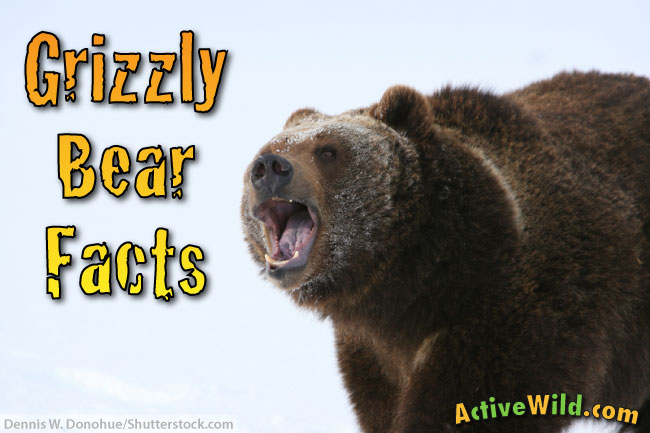
Grizzly Bear Facts At A Glance
- Other Name(s): silvertip bear, North American brown bear
- Scientific name: Ursus arctos horribilis
- Type of Animal: Mammal, member of Carnivora order
- Animal Family: Ursidae (the bear family)
- Where Found: Western Canada, Alaska and northwestern United States
- Length: 1.98 m (6.5 ft.)
- Height: Up to 3 meters (9.8 ft.) when standing on hind legs
- Weight: Up to 1,700 lb. (771 kg); females: up to 800 lb. (363 kg)
- Conservation Status: Least Concern
- Other interesting Grizzly Bear facts: The grizzly bear is a subspecies of brown bear.
Grizzly Bear Video
Meet The Grizzly Bear: Introduction
The grizzly bear is a North American subspecies of brown bear. It is an apex predator, famed for its strength and hunting ability, as well as for its bad temper. The grizzly bear’s scientific name, Ursus arctos horribilis, means terrifying brown bear!
The brown bear is found in many parts of Europe and Asia as well as in North America. Its range (the area in which it is found) is larger than that of any other bear. The North American brown bear subspecies (the grizzly and Kodiak bears) are the largest of all brown bear subspecies.
Grizzly bears are solitary animals, only congregating when an abundant food source is available (such as the annual salmon migration, during which large numbers of fish make their way upriver to spawn).
Grizzly bears rarely climb trees, but are good swimmers. Don’t try to outrun a grizzly: they can reach speeds of up to 35 mph (56.3 km/h) in short bursts!
What Does A Grizzly Bear Look Like?
The grizzly bear is a large bear with a big head, long snout and short, rounded ears. Its face can appear slightly concave (curved inwards).
The grizzly bear has a large hump on its back above its shoulders – a feature only found in brown bears. It is made entirely of muscle for digging.
The grizzly bear’s fur is dark brown near the skin and paler towards the ends. Fur color varies between individuals. Some grizzly bears are a pale golden color, others are a much darker brown.
Grizzly Bear Vs Black Bear
The grizzly bear can be told apart from the black bear by the grizzly’s larger size, brown color and shoulder hump.
Grizzly Bear Size
The brown bear is the second-largest of the eight species of bear alive today. The grizzly bear is the second-largest subspecies of brown bear. Only the very similar Kodiak bear is bigger. (Kodiak bears are found on Kodiak Archipelago, a group of islands south of Alaska.)
On average, the largest bear is the polar bear. However, some individual Kodiak bears may be larger or of a similar size to the largest polar bears.
Grizzly bears vary greatly in both size and appearance throughout their range. Although the very biggest males can reach up to 1,700 lb. (771 kg), most are significantly smaller. Most males weigh between 400 and 790 lb. (180 and 360 kg).
Grizzly bears that live near the coast tend to be larger than those found inland. Bears living by the coast can feast on salmon as the fish make their way upstream to spawn.
Female grizzly bears are significantly smaller than males. The largest weigh up to 800 lb. (363 kg), but most are between 91 and 180 kg (200 and 400 lb.).
Grizzly bears are around 1 m (3.5 ft.) tall at the shoulder. Larger specimens may be 1.5 m (4.9 ft.) at the shoulder, and up to 3 meters (9.8 ft.) tall when standing on their hind legs!
Grizzly Bear Habitat & Range
Most grizzly bears are found in western Canada and Alaska. Grizzly bears are also found in several northwestern United States, including Idaho, Montana, Washington, and Wyoming. They are present in Yellowstone, Glacier and Grand Teton National Parks.
The grizzly bear is found in a variety of habitats, including forests, rocky hillsides, coastlines, meadows and forests.
Grizzly Bear Claws
A grizzly bear’s claws are long and curved. They are around 10 cm (4 in) in length, and very strong. Unlike those of the black bear, they are not sharp, and are built for digging rather than climbing trees (grizzly bears are rarely found in trees). The grizzly’s claws are also useful for catching fish.
What Do Grizzly Bears Eat?
Grizzly bears are omnivores (their diet consists of both meat and plants). The plant portion of their diet consists of nuts, berries, tubers, roots and grasses.
Grizzly bears hunt a variety of animals, including moose, other deer species, bighorn sheep and cattle. They will also eat carrion (dead animals) and scavenge kills made by other animals.
Salmon forms an important part of the diet of many grizzly bear. Grizzly bears congregate near (and in) rivers during the salmon spawning season.
Grizzly bears living by the coast will also dig for shellfish.
Grizzly Bear Facts: Hibernation
Grizzly bears hibernate for between 5 and 7 months during the coldest period of the year. In the months before hibernation, the bears eat as much as they can. This is in order to build up reserves of fat that they can live off during the winter.
At the onset of winter, grizzly bears dig holes called dens. The bears hibernate in these dens and emerge in spring.
While hibernating, the grizzly bear’s metabolism (the rate at which energy is used by their bodies) slows down. Its heart will only beat 9 times per minute and its body temperature will drop slightly. The bear won’t even go to the bathroom during this time!
Grizzly Bear Cubs
Mating takes place during May and July. During this time males will fight each other for access to females. In a process known as ‘delayed implementation’, pregnancy is delayed until winter, when the female is hibernating.
The female wakes before giving birth. She usually gives birth to two cubs, but there can be as few as one or as many as four cubs per litter. The cubs are nursed in the den until spring.
Grizzly cubs stay with their mother for 2 years. Male bears pay no part in rearing their cubs.
Grizzly bears are among the slowest animals to reproduce. They don’t begin to reproduce until around five years old. After having cubs, females may not raise another litter for three or more years.
Grizzly Bear Vs Polar Bear
Polar bears are found further north than grizzly bears. They are larger than grizzly bears, and are specialist marine hunters: polar bears live on the Arctic ice, and mainly eat seals.
Although their ranges to overlap, the two species have evolved to inhabit different niches. Each would find it hard to live in the other’s habitat. However, hybrids (animals that are part grizzly bear, part polar bear) are occasionally encountered.
Now see more amazing animals in the Active Wild Online Zoo!
Visit a world-class zoo ... without leaving your home! At the Active Wild Online Zoo you'll find FREE pictures, facts and information on the world's most incredible animals. Each page also features a specially chosen video, and a list of questions to test your knowledge!
Grizzly Bear Facts: Related Pages
Bear Articles
- Bear Facts: The Ultimate Guide To Bears
- American Black Bear
- Asian Black Bear
- Brown Bear
- Grizzly Bear
- Panda
- Polar Bear
- Sloth Bear
- Spectacled Bear
- Sun Bear
- View awesome bear gifts, books and films at WildGateway.com
Related Animal Articles
- Discover more amazing animals from all around the world: A to Z Animals
- Find out about mammals: Mammals: The Ultimate Guide
- Become an animal expert: Animals: The Ultimate Guide


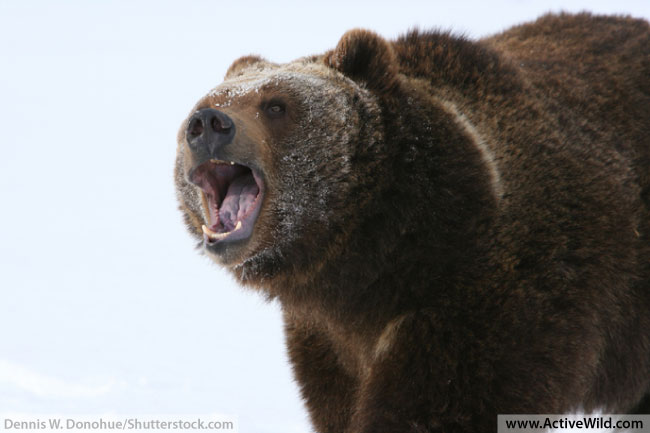
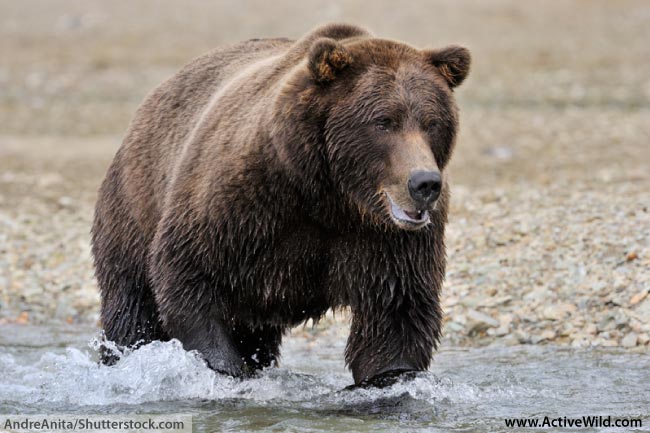
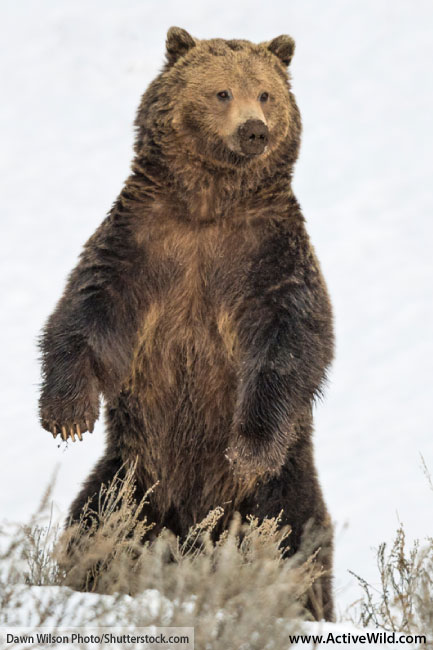
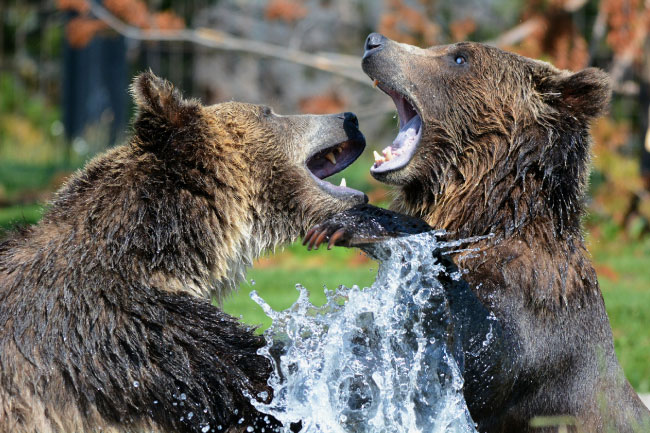

Very nice site and informative. Thank you.
Have a nice day.
i liked it because it gave you info about grizzly’s some others and comparison info
I liked it because it had everything I needed to know on grizzles
Thanks for doing this for us